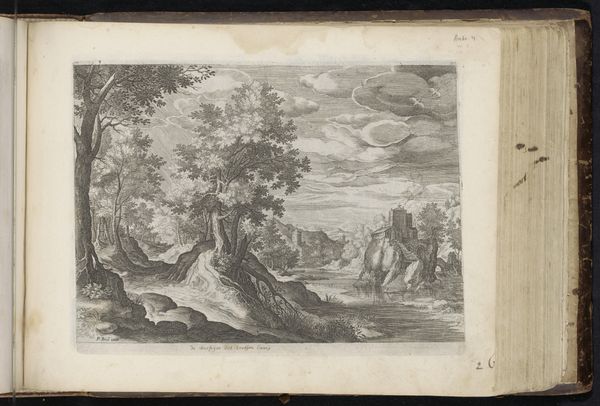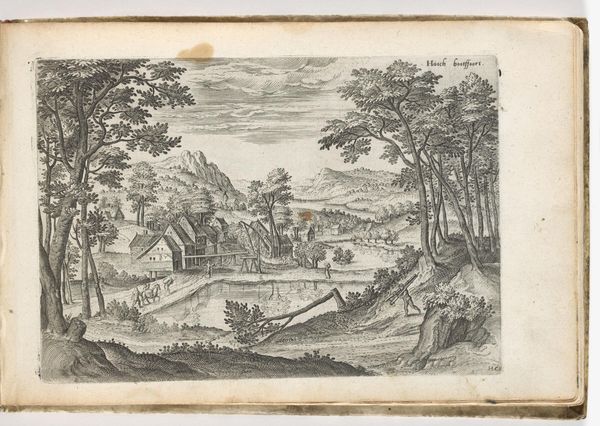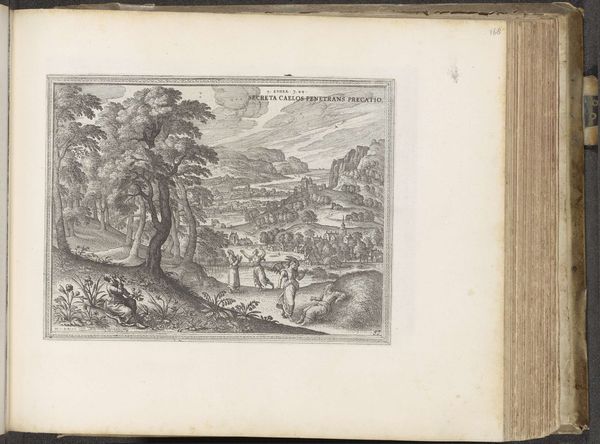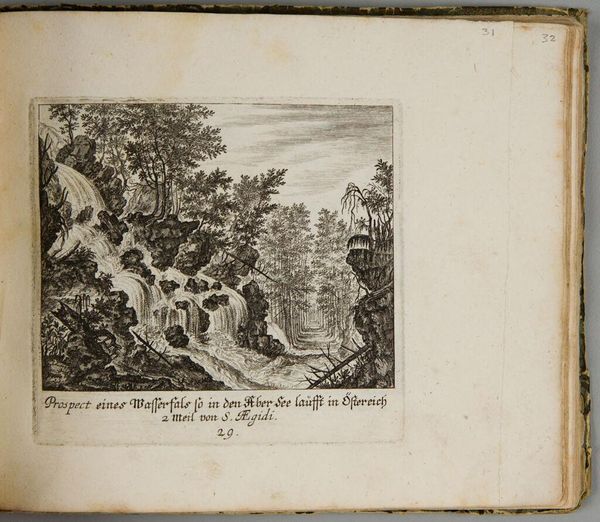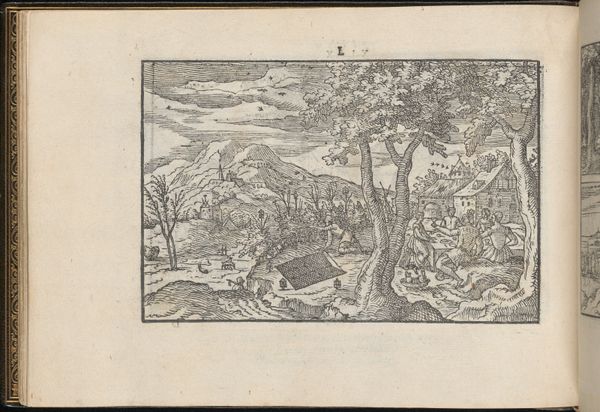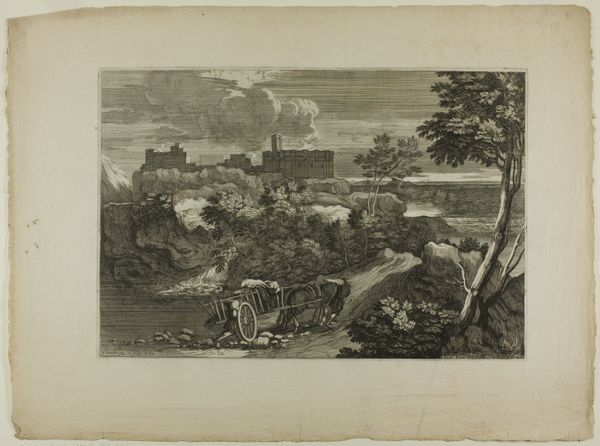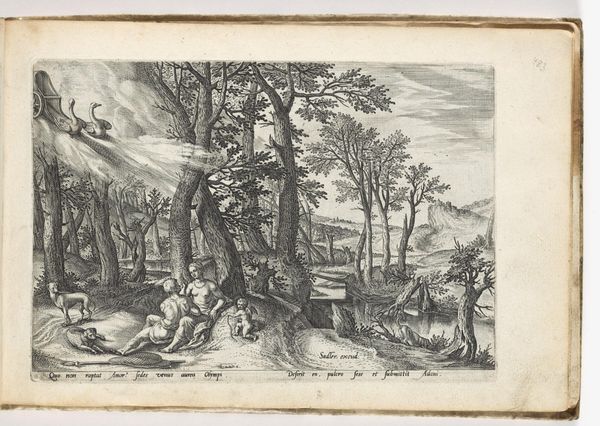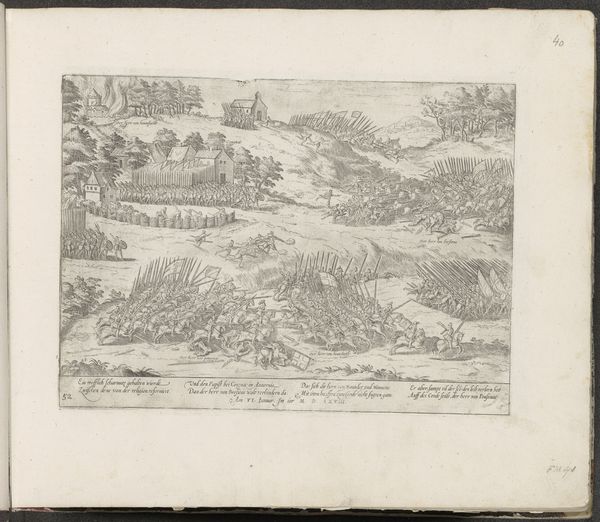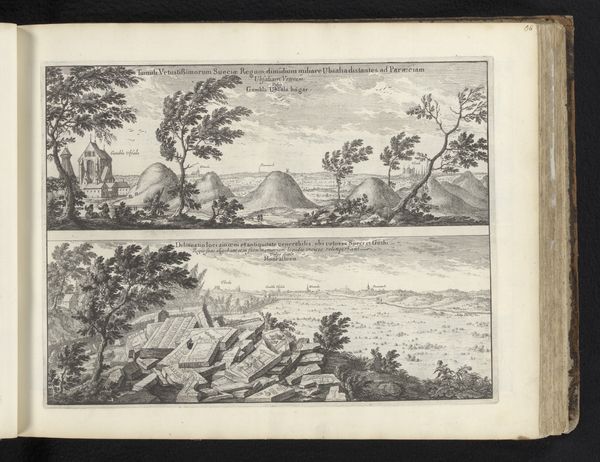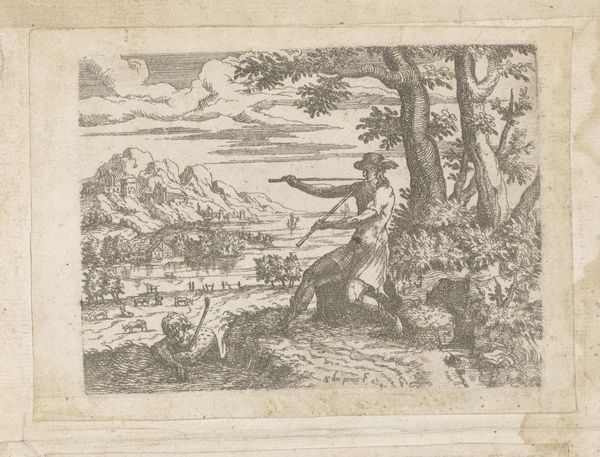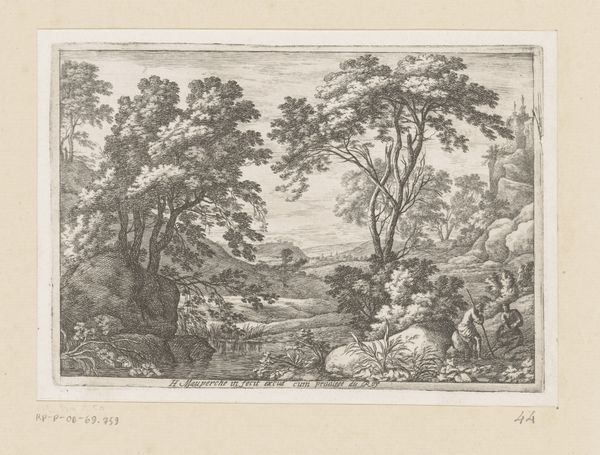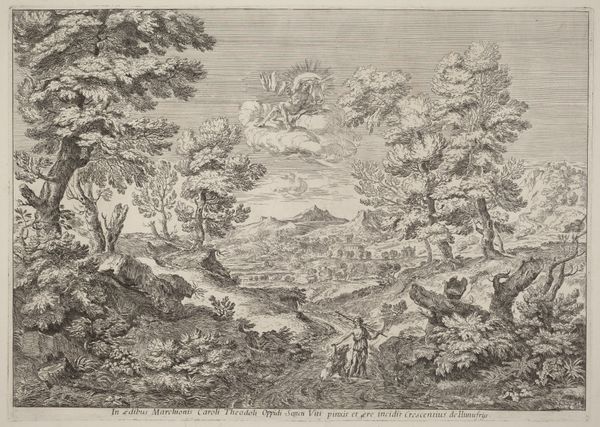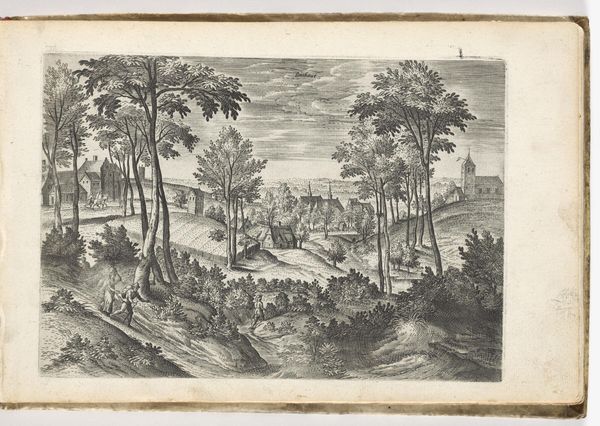
drawing, engraving
#
drawing
#
baroque
#
landscape
#
forest
#
coloured pencil
#
genre-painting
#
engraving
Dimensions: height 220 mm, width 274 mm
Copyright: Rijks Museum: Open Domain
Curator: This engraving, titled "Priester loopt voorbij aan de gewonde reiziger," dating back to 1646, is currently housed at the Rijksmuseum. It is rendered with remarkable detail, showcasing a classic scene in the landscape style, but let's start with initial thoughts. Editor: Bleak. My immediate sense is this world is rather indifferent. The detailed rendering doesn’t make it feel more inviting. It feels… ominous, like something terrible is about to happen, if it hasn’t already. Curator: The work’s materiality speaks to a specific moment in printmaking, where engraving allowed for increasingly fine lines and tonal range. Consider the labour involved; the social function of such an image produced through a mechanical, repeatable method. Editor: Thinking of process… those stark lines feel a world away from, say, a Rembrandt etching. You lose that velvety darkness. It becomes almost diagrammatic. It makes me wonder about accessibility – who was consuming such readily reproducible images? Curator: Exactly! This engraving allowed broader dissemination of narratives, particularly biblical scenes. Notice the foreground: the priest’s action. This visual narrative, part of the broader artistic output of genre-painting in the Baroque period, invites reflection on ethical action and viewership within its specific socioeconomic setting. Editor: And the forest… dark and somewhat tangled, but with a picturesque little house peeking out, like a promised haven. So near, and yet… It feels symbolic – salvation so close, yet ignored. Almost sarcastic. Did people then pick up on that sense of social commentary? Curator: It would certainly foster discussion within the public sphere. By dissecting the materials, we can gain more insight of artistic skills of the time. Editor: This walk through the print has me reflecting on my initial bleak reaction. The technique almost emphasizes a cold moral judgement inherent in the subject, as well as, obviously, the artistic production of the image. Curator: It also is nice to have our emotional response considered as a form of art historical and material analysis!
Comments
No comments
Be the first to comment and join the conversation on the ultimate creative platform.
